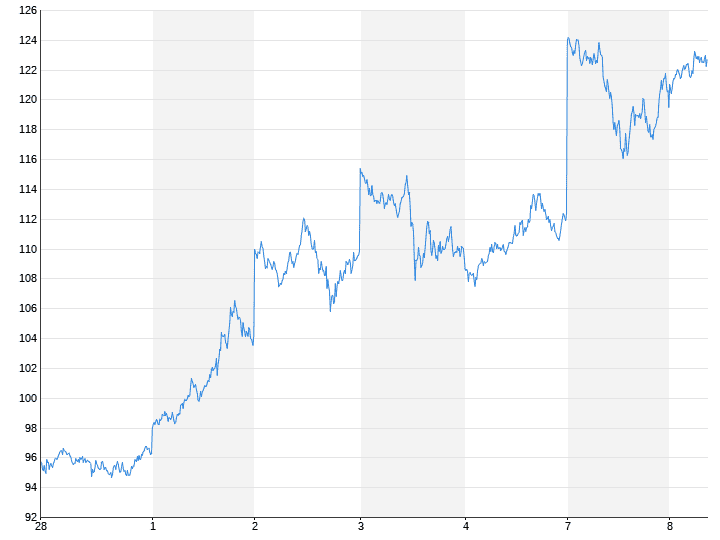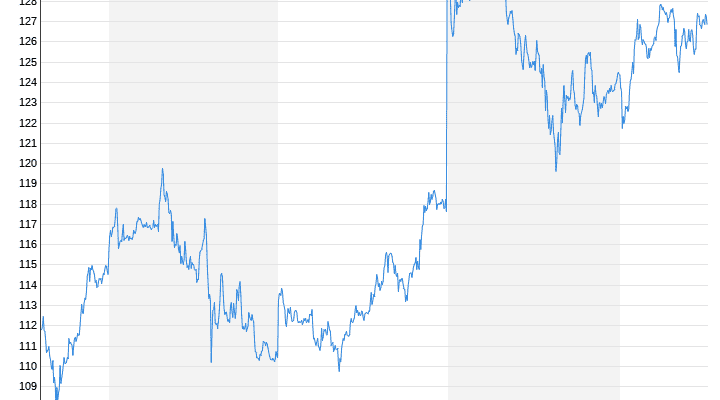turbulence in the commodity market
Russia warns of $300 a barrel oil price
03/08/2022 11:31 am
After the US brought up an import ban on Russian oil, Moscow is now threatening retaliatory measures over gas supplies via Nord Stream 1. Investors and consumers react nervously. For the first time nationwide, fuel prices have risen above two euros per liter.
The topic of the energy crisis is still driving investors on the commodity markets. This time, fears of further price explosions were fueled by statements by Russian Deputy Prime Minister Alexander Nowak: Western countries could be confronted with oil prices of over 300 dollars a barrel and the possible closure of the main Russian-German gas pipeline if the governments carry out their threats that to cut energy supplies from Russia.
“It is absolutely clear that a rejection of Russian oil would have catastrophic consequences for the world market,” Nowak said on state television the night before. “The price increase would be unpredictable. It would be $300 a barrel if not more.” It would take Europe more than a year to replace the amount of oil it receives from Russia, he added. “European politicians must honestly warn their citizens and consumers what to expect,” said Nowak.
“If you want to refuse energy supplies from Russia, do so. We are prepared. We know where we could divert the amounts.” After Germany froze the certification of the Nord Stream 2 gas pipeline last month, Russia has every right to take retaliatory measures against the European Union “and to impose an embargo on pumping gas through the Nord Stream 1 gas pipeline,” Nowak said .

After taking profits the night before, oil prices are back on the way up Tuesday morning. However, the multi-year highs of the previous day have not yet been reached. A barrel (159 liters) of North Sea Brent cost $127.88. That’s $4.67 more than last night. The price of a barrel of the US West Texas Intermediate (WTI) variety rose by $3.73 to $123.13.
US imports less Russian oil
One thing is certain: Russia’s oil supplies are not easy for Europe to replace. Russia is the third largest oil producer in the world and the second largest exporter. Most recently, the country exported an average of between 4.5 and 5 million barrels of crude oil per day. This corresponds to around five percent of global oil consumption. According to the International Energy Agency, up to 2.8 million barrels of processed products such as gasoline and diesel are added every day. The situation in the USA is much more comfortable than that in the EU: while the USA imports 700,000 barrels a day, the Europeans get four million barrels a day from Russia.
The trigger for the threat of retaliatory measures were statements made on Sunday by US Secretary of State Antony Blinken, who said that an import ban on Russian oil was being discussed with the EU. Oil prices then jumped to their highest level since 2008. The price for a barrel of North Sea Brent North Sea rose at times by almost 20 percent and reached almost 140 US dollars, WTI cost more than 130 dollars at its peak. On Monday evening, however, investors decided to take profit. While the US continues to steer towards such an import ban, the European Union is divided on the issue. Germany in particular is against it. Economics Minister Robert Habeck doesn’t think stopping Russian gas imports is a good idea. “Of course you can do that, but you have to be clear about the price you’re paying,” said the Green politician on ntv’s “Frühstart”.
Commodity experts in the west see the oil price below the 200 euro mark so far. If the war doesn’t stop, Brent prices could soar to $156-$185 a barrel,” said Kedia Commodities analyst Ajay Kedia.
Concerns about a supply stop fuel “panic mood”
The fear of an energy crisis can also be seen in the gas market: the wholesale price for natural gas reached an all-time high. According to Fabian Huneke from the consulting firm Energy Brainpool, on Monday morning natural gas was traded for around 335 euros per megawatt hour for delivery the following day. For comparison: On February 16, around a week before the Russian attack on Ukraine, natural gas was still being traded at around 69 euros per megawatt hour for delivery the following day. The information provided by the energy market expert relates to the German market area on the Pegas trading platform, which is operated by the EEX energy exchange. Huneke spoke of a “panic mood” on the markets, which was due to concerns about a supply disruption.
Due to the tense market situation, the oil company Shell initially restricted the sale of heating oil, diesel and other products to some major customers in Germany. According to consistent media reports, this emerges from a letter from Shell Germany. The reason given is “massive distortions and shortages on the energy markets” as a result of the outbreak of war, the subsequent sanctions and the economic recovery after the pandemic lull.
In order to be able to continue to fulfill contractually promised obligations, one restricts the so-called spot sale – i.e. the current sale of oil, diesel and other products without prior agreements. All levers are being set in motion “to stabilize the supply chains in the best possible way,” it says.
fuel prices over two euros per liter
Meanwhile, the Ukraine war is making itself felt more and more at gas stations. Until recently, a fuel price of more than two euros was considered unlikely, but now it is a reality for the first time in the history of the Federal Republic. Fuel prices climbed above the two-euro threshold for the first time. On a nationwide daily average on Monday, premium petrol of the E10 variety cost 2.008 euros per liter, with diesel it was 2.032 euros, as the ADAC announced on Tuesday in Munich.
Economics Minister Robert Habeck even considers petrol prices of three euros per liter to be conceivable in view of the Ukraine war. “In this situation, of course, nothing is out of the question,” he said in ntv’s “early start”. The current prices are fueled by the war, speculation on the stock exchanges and discussions about a possible ban on Russian oil imports by the USA.
The fact that such extreme fuel price records are currently being achieved is also due to the fact that the effect of the war in Ukraine is building on the record levels that have already been reached in recent months. The increase over the year is huge: on average in March 2021, diesel still cost 1.315 euros per liter, with Super E10 it was 1.454 euros.
